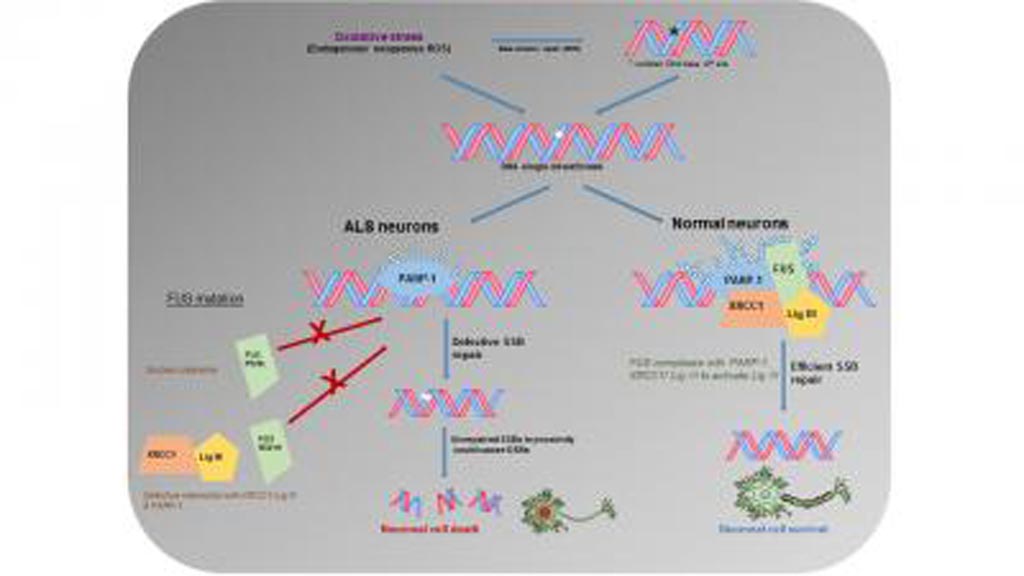Mechanism Explains Why Damaged DNA Accumulates in ALS Neurons
By LabMedica International staff writers
Posted on 13 Nov 2018
A team of neurodegenerative disease researchers identified a mechanism that leads to the accumulation of damaged DNA in neurons that characterizes amyotrophic lateral sclerosis (ALS).Posted on 13 Nov 2018
ALS is a neurodegenerative disease characterized by the selective and progressive death of upper and lower motor neurons. This leads to progressive muscle weakness, and death of the patient usually occurs within two to five years after the onset of symptoms. In approximately 10% of patients, there is a clear family history.

Image: Identification of a link between motor neurons\' inability to repair oxidative genome damage in ALS suggests that DNA ligase-targeted therapies may prevent or delay disease progression (Photo courtesy of Hegde Laboratory, Houston Methodist Hospital).
Genome damage and defective repair have been linked to neurodegeneration in conditions such as ALS. However, the specific mechanisms involved remain unclear. In this regards, investigators at Houston Methodist Hospital (TX, USA) identified defects - caused by mutations in the RNA/DNA-binding protein FUS - in DNA nick ligation and oxidative damage repair in a subset of ALS patients.
FUS rapidly appears at sites of DNA damage, which suggests that it is orchestrating the DNA repair response. The function of FUS in the DNA damage response in neurons involves a direct interaction with histone deacetylase 1 (HDAC1). The recruitment of FUS to double-strand break sites is important for DNA damage response signaling and for repair of DNA damage. FUS loss-of-function results in increased DNA damage in neurons. Mutations in the FUS nuclear localization sequence impair the poly (ADP-ribose) polymerase (PARP)-dependent DNA damage response. This impairment leads to neurodegeneration and FUS aggregate formation. Such FUS aggregates are a pathological hallmark of ALS.
The investigators examined the connection between FUS function and DNA ligation defects in multiple model systems, including CRISPR/Cas9-mediated FUS knockout (KO) cells, familial ALS patient-derived induced pluripotent stem cells (iPSCs) with FUS mutations, motor neurons differentiated from these patient-derived iPSCs, and spinal cord tissue with FUS pathology from ALS patients.
Result published in the September 11, 2018, online edition of the journal Nature Communications revealed that loss of nuclear FUS caused DNA nick ligation defects in motor neurons due to reduced recruitment to DNA strand breaks of the XRCC1/LigIII enzyme complex. DNA ligation defects in ALS patient-derived iPSC lines carrying FUS mutations and in motor neurons generated therefrom were rescued by CRISPR/Cas9-mediated correction of the mutation.
These findings revealed a pathway of defective DNA ligation in FUS-linked ALS and suggested that LigIII-targeted therapies could prevent or delay progression of the disease.
Related Links:
Houston Methodist Hospital













